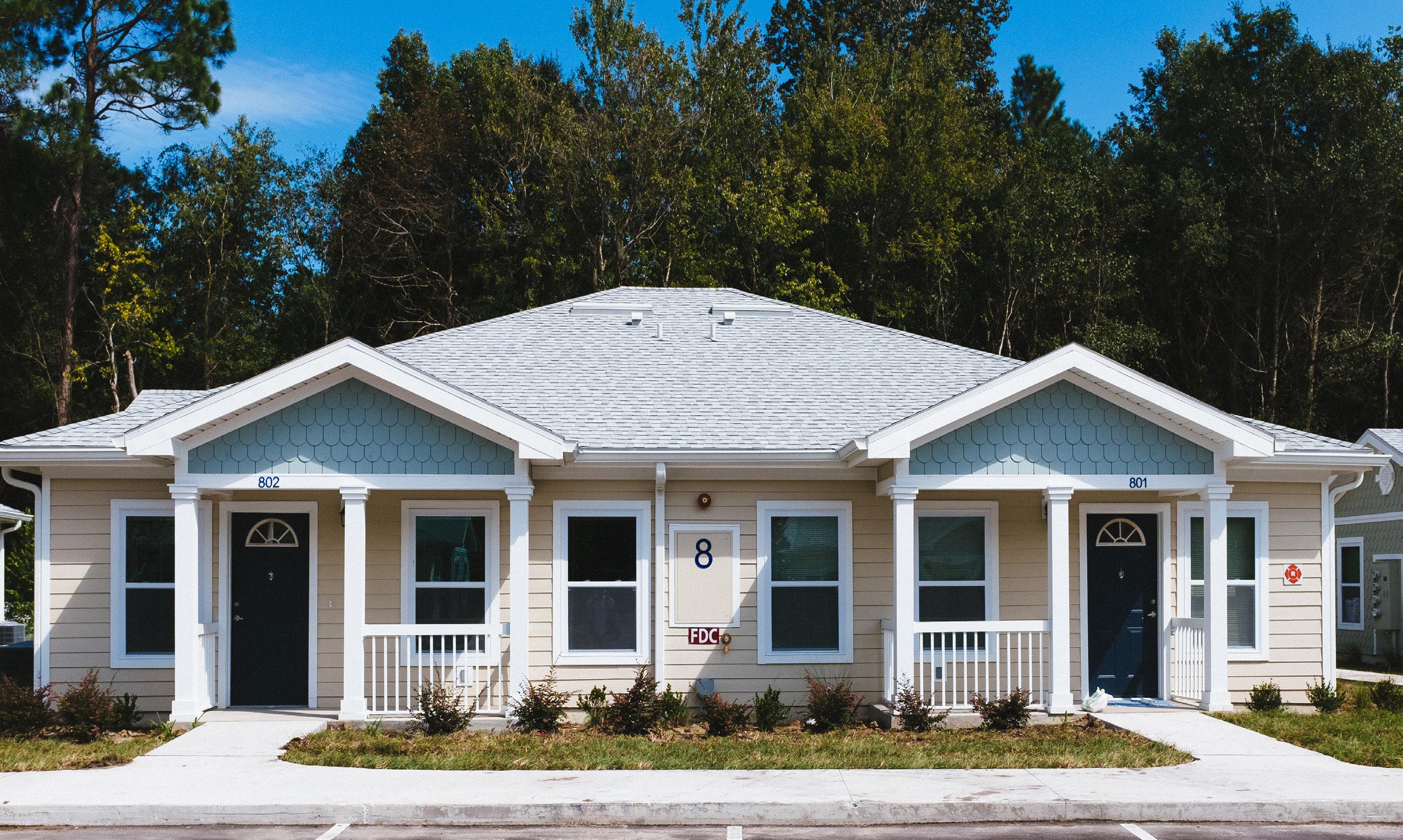TABLE OF CONTENTS KEY FINDINGS Studies around the nation show that cost savings to public systems, particularly crisis services, occur when high utilizers of these services are provided with supportive housing. Supportive housing is a highly effective strategy that combines affordable housing with community-based services to help people maintain a stable home. It is a proven model to help people who are not stably housed or who are experiencing homelessness, as well as persons with disabilities who can live independently in their communities with supportive services. In 2014 Florida Housing Finance Corporation awarded $10 million in housing development financing through a competitive application process to three experienced non-profit developers. The target population at the three properties was extremely low-income persons experiencing chronic homelessness who were high users of publicly funded crisis services. Florida Housing sought providers that were working in partnership with a network of organizations that would be able to provide the service supports necessary for the pilot. Table 1 shows the Pilot Sites awarded funding. This report describes and compares the three pilots that were part of the state pilot and summarizes the
research evaluating costs to public systems prior to housing compared to after housing was obtained. Findings also include evaluations of residents’ personal outcomes prior to move-in and after living in housing for two years. The report discusses concerns that arose during implementation related mainly to the lack of integration in the housing and services infrastructure in Florida, particularly around coordination and funding of services in supportive housing settings. Finally, the report proposes housing and services best practices in serving persons who are high utilizers of public services. People experiencing chronic homelessness typically have complex and long-term health conditions, such as mental illness, substance use disorders, physical disabilities, and other medical conditions. This report uses the term “high needs” to refer simply to the panoply of conditions many persons experiencing homelessness have. As a result of these often acute, unresolved concerns, these individuals may rely heavily on public crisis services. This report refers to persons in these situations as “high utilizers.” The final research reports for each pilot can be accessed here: https://www.floridahousing.org/programs/ special-programs/report-on-the-findings-of-the-floridahigh-needs-high-cost-pilot-april-2021.
Table 1. Pilots Funded Number of Units*
County
Name
Provider
Duval
Village on Wiley
Ability Housing, Inc
43
Miami-Dade
Coalition Lift
Carrfour Supportive Housing, Inc
34
Pinellas
Pinellas Hope V
Catholic Charities Diocese of St Pete
45
* The Duval and Miami-Dade pilots also include residents from other supportive housing sites in their studies.
Findings of the Florida High Needs High Cost Pilot
5








